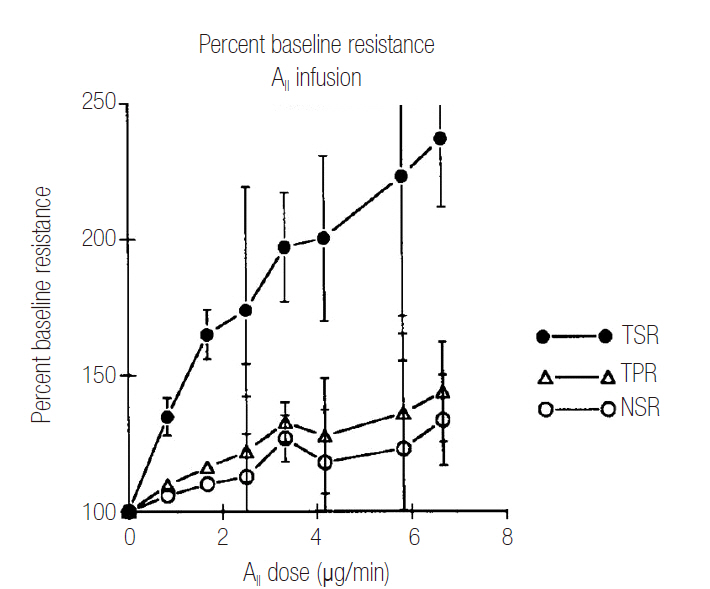Korean J Crit Care Med.
2017 Nov;32(4):363-369. 10.4266/kjccm.2016.00073.
Methidathion Poisoning
- Affiliations
-
- 1Department of Surgery, Inje University Haeundae Paik Hospital, Inje University College of Medicine, Busan, Korea.
- 2Department of Anesthesiology, Inje University Haeundae Paik Hospital, Inje University College of Medicine, Busan, Korea. charles6133@msn.com
- KMID: 2405124
- DOI: http://doi.org/10.4266/kjccm.2016.00073
Abstract
- Although methidathion is an organophosphate insecticide, it is different from the other organophosphates in terms of toxicity. Because of its relatively high fat solubility, the apparent volume of methidathion distribution throughout the body is very high, indicating that hemoperfusion is not effective in removing this organophosphate from the body. Redistribution of methidathion from fat to blood can also occur when plasma levels diminish. Additionally, acetylcholinesterase aging, which is the loss of an alkyl side chain that prevents reactivation by oximes, is very rapid so that the effective reactivation by oximes is thwarted. Thus, methidathion's effect on acetylcholinesterase inhibition is long lasting, particularly with a high dose. In addition to its parasympatholytic effect and ability to induce muscle paralysis, methidathion poisoning is associated with a profound and long-lasting circulatory collapse due to sympathetic ganglion blockade. This report presents the case of a 55-year-old man who accidentally ingested a high dose of methidathion. He later developed enteroinvasive aspergillosis infection-induced multiple bowel perforations on two separate occasions while on mechanical ventilator support, resulting in a fatal outcome. The renin-angiotensin axis activated by sympathetic ganglion blockade may have reduced the patient's splanchnic blood flow, contributing to translocation of endotoxin. Also, the effect of excessive acetylcholine on non-neuronal acetylcholine receptors may have contributed to the development of fatal enteroinvasive aspergillosis in this patient.
MeSH Terms
-
Acetylcholine
Acetylcholinesterase
Aging
Aspergillosis
Fatal Outcome
Ganglia
Ganglia, Sympathetic
Hemoperfusion
Humans
Middle Aged
Organophosphate Poisoning
Organophosphates
Oximes
Paralysis
Parasympatholytics
Plasma
Poisoning*
Receptors, Cholinergic
Shock
Solubility
Ventilators, Mechanical
Acetylcholine
Acetylcholinesterase
Organophosphates
Oximes
Parasympatholytics
Receptors, Cholinergic
Figure
Reference
-
References
1. Bull DL. Metabolism of O, O-dimethyl phosphorodithioate S-ester with 4-(mercapto-methyl)-2-methoxy-Δ2-1,3,4-thiadiazolin-5-one (Geigy GS-13005) in plants and animals. J Agric Food Chem. 1968; 16:610–16.2. Reilly PM, Bulkley GB. Vasoactive mediators and splanchnic perfusion. Crit Care Med. 1993; 21(2 Suppl):S55–68.
Article3. Tokyay R, Zeigler ST, Traber DL, Stothert JC Jr, Loick HM, Heggers JP, et al. Postburn gastrointestinal vasoconstriction increases bacterial and endotoxin translocation. J Appl Physiol (1985). 1993; 74:1521–7.
Article4. Freestone PP, Hirst RA, Sandrini SM, Sharaff F, Fry H, Hyman S, et al. Pseudomonas aeruginosa-catecholamine inotrope interactions: a contributory factor in the development of ventilator-associated pneumonia? Chest. 2012; 142:1200–10.5. Lyte M, Freestone PP, Neal CP, Olson BA, Haigh RD, Bayston R, et al. Stimulation of Staphylococcus epidermis growth and biofilm formation by catecholamine inotropes. Lancet. 2003; 361:130–5.6. Eisendle M, Oberegger H, Zadra I, Haas H. The siderophore system is essential for viability of Aspergillus nidulans: functional analysis of two genes encoding l-ornithine N 5-monooxygenase (sidA) and a non-ribosomal peptide synthetase (sidC). Mol Microbiol. 2003; 2:359–75.
Article7. Rosas-Ballina M, Olofsson PS, Ochani M, Valdés-Ferrer SI, Levine YA, Reardon C, et al. Acetylcholine-synthesizing T cells relay neural signals in a vagus nerve circuit. Science. 2011; 334:98–101.
Article8. Roshchina VV, Aleksandrova IF. An enzyme from the fungus Aspergillus niger that hydrolyzes choline ethers. Nauchnye Doki Vyss Shkoly Biol Nauki. 1991; 12:50–4.9. Fiddian-Green RG, Haglund U, Gutierrez G, Shoemaker WC. Goals for the resuscitation of shock. Crit Care Med. 1993; 21(2 Suppl):S25–31.
Article10. Rajendran R, Borghi E, Falleni M, Perdoni F, Tosi D, Lappin DF, et al. Acetylcholine protects against Candida albicans infection by inhibiting biofilm formation and promoting hemocyte function in a Galleria mellonella infection model. Eukaryot Cell. 2015; 14:834–44.
Article11. Inglis DO, Arnaud MB, Binkley J, Shah P, Skrzypek MS, Wymore F, et al. The Candida genome database incorporates multiple Candida species: multispecies search and analysis tools with curated gene and protein information for Candida albicans and Candida glabrata. Nucleic Acids Res. 2012; 40(Database issue):D667–74.
Article12. Borghi E, Morace G, Borgo F, Rajendran R, Sherry J, Nile C, et al. New strategic insights into managing fungal biofilms. Front Microbiol. 2015; 6:1077.
Article13. Ramage G, Robertson SN, Williams C. Strength in numbers: antifungal strategies against fungal biofilms. Int J Antimicrob Agents. 2014; 43:114–20.
Article14. Cha SA, Kim MH, Lim TS, Kim HH, Chang KY, Park HS, et al. Invasive primary colonic aspergillosis in the immunocompetent host without classical risk factors. Yonsei Med J. 2015; 56:1453–6.
Article15. Delamaire M, Maugendre D, Moreno M, Le Goff MC, Allammic H, Genetet B. Impaired leukocyte function in diabetic patients. Diabet Med. 1997; 14:29–34.16. Lass-Flörl C, Roilides E, Löffler J, Romani L. Minireview: host defence in invasive aspergillosis. Mycoses. 2013; 56:403–13.
Article17. Russo A, Giuliano S, Vena A, Lucidi C, Falcone M, Raponi G, et al. Predictors of mortality in nonneutropenic patients with invasive pulmonary aspergillosis: does galactomannan have a role? Diagn Microbiol Infect Dis. 2014; 80:83–6.
Article18. Eyer P. The role of oximes in the management o organophosphorus pesticide poisoning. Toxicol Rev. 2003; 22:165–90.19. Zoppellari R, Targa L, Tonini P, Zatelli R. Acute poisoning with methidathion: a case. Hum Exp Toxicol. 1990; 9:415–9.
Article20. Nelson DL, Crawford CR. Organophosphorus compounds; the past and the future. Clin Toxicol. 1972; 5:223–30.
Article
- Full Text Links
- Actions
-
Cited
- CITED
-
- Close
- Share
- Similar articles
-
- Continuous renal replacement therapy increased plasma cholinesterase activity in a case of acute organophosphate poisoning
- Factors for Determining Survival in Acute Organophosphate Poisoning
- Intermediate Myasthenia Syndrome Following Organophosphate Intoxication
- Pulmonary edema in acute carbon monoxide poisoning
- Strategies for Prevention of Food Poisoning


